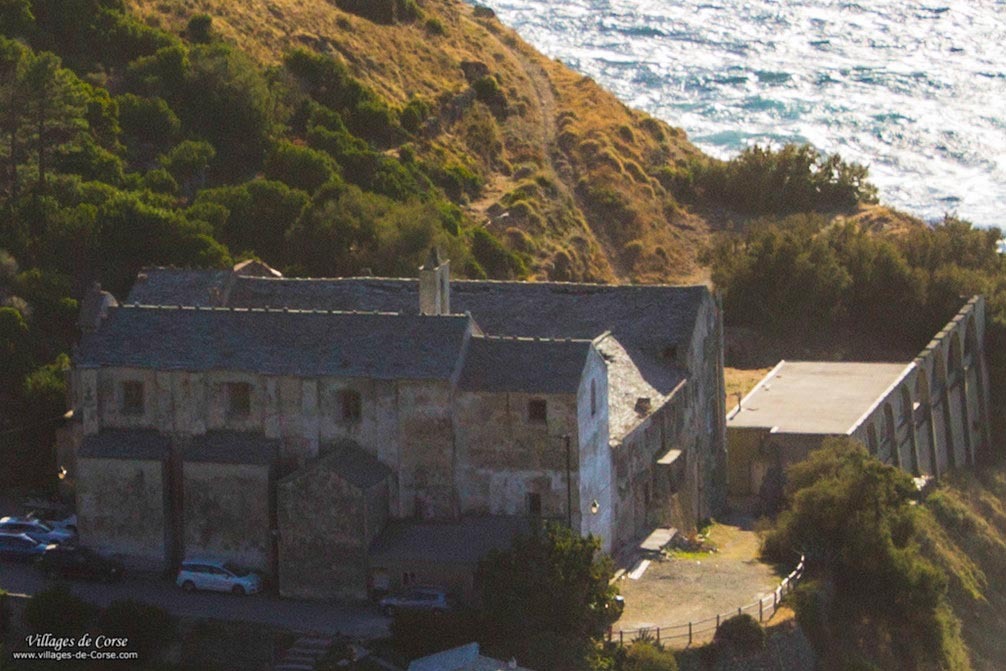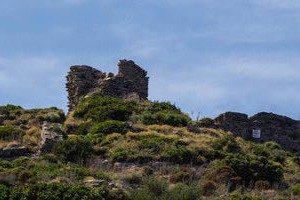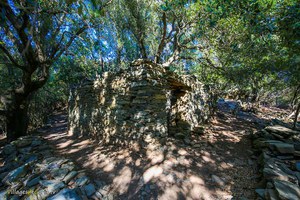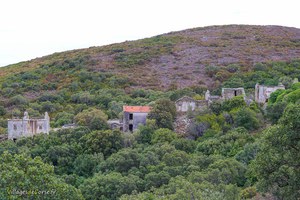The Saint Francis Convent of Pino
500 years of the history of the Convent of Saint Francis (San Francescu)
In 1486, Pope Innocent VIII took the decision in Rome to build the Convent of Saint Francis in Pino, which was completed in 1495, a century before the construction of the Scalu tower.
An Observantine convent that could accommodate up to fifty friars, it later became a Franciscan convent. It was also used as a refuge during raids.
An order threatened by the revolution, but supported by the Corsicans
In 1792, following the French Revolution, anti-clerical policies included the abolition of religious orders. In Pino, the local people came to the defence of the brothers, welcoming them into their homes until things calmed down, before they could return to the convent. Nearly 30 years later, still outside the law and under threat from the revolutionaries, the Corsicans of the region mobilised in 1818 with a petition calling for the restoration of the religious order. It was signed by 158 people from both the clergy (priests) and the civil world, including the Mayor of Pino, the mayors of Cap Corse and the justices of the peace. This action was rejected by the government. The last Franciscan died in 1835.
It was under the impetus of the rebirth of the Dominican Order in France, initiated by Henri-Dominique Lacordaire - a Catholic religious who joined the Order in 1840 - that the notaries, the mayor and the parish priest of Pino put the subject back on the table. At their request, an Italian friar (Syrus de Vicopelago) came to preach Lent in 1854, before being appointed guardian of the convent by Father Anselme Martinelli, a priest from Tuscany who was restoring the order of Saint Francis on the island.
The convent reopened in Pino as elsewhere in Corsica, particularly in Niolu and Alesani. This respite lasted until 1880 and a new threat of expulsion. Once again, the people of Pino rose up in protest, with a petition from the notables against the closure of the convent. This action bore fruit, allowing the convent to continue operating until the next government offensive.
In 1903, 2 years before the law separating Church and State, the religious community was made up of a dozen members, including the future auxiliary bishop of Ajaccio (Augustin Giustiniani). The anti-congregation laws (1901-1904) led to the expulsion of the Franciscans and other French religious. Thrown into exile, some found refuge in Italy.
It wasn't until 1938 that the Convent was able to function again. Its garden, Pierre-Baptiste Polverelli, knew the place well, having studied theology there in 1902.
From Convent to Seraphic College
After centuries of offensives by the post-revolutionary regime against the religious order, it was finally the advent of a new world, less religious and more materialistic, that triggered a crisis in vocations and, more generally, in spirituality.
It was against this backdrop that the Brothers of the island decided in 1951 to open a Seraphic College in the now former Convent of Pino.
The establishment remained a religious establishment, but it became a minor seminary intended to train priests or brothers within the Franciscan order. The Seraphic College welcomed up to 30 students in 1955.
It remained in operation until 1972, since when the convent has remained as it is, gradually falling into disrepair, at the mercy of particularly harsh climatic conditions, between the salt of the sea winds, the humidity and the summer heat.
The U Cunventu association
Not completely abandoned, the desire to save the Convent of Pino is now supported by U Cunventu, an association created on 3 August 2004, whose aim is to promote the heritage of the village as a whole, of which the Convent is an important part.
In the Heritage Lotto
In 2018, the cameras of France 3 were turned on the Convent for Stéphane Bern's programme, Le loto du patrimoine. The winnings from all the selected sites were used to launch an entire restoration project. A crowdfunding operation also raised the sum of 120,000 euros, earning the Fondation du Patrimoine 2nd prize for patronage.
Details of the restoration work:
- North section: framework and decking: €200,000
- North section: framework and decking: €200,000
- Western section: additional roofs: €300,000
- Final part of the roofing work: €90,000
The Convent of Saint Francis in Video - Olmu Production
Watch the Olmu Productions report on the Convent of Saint Francis in Pino.





